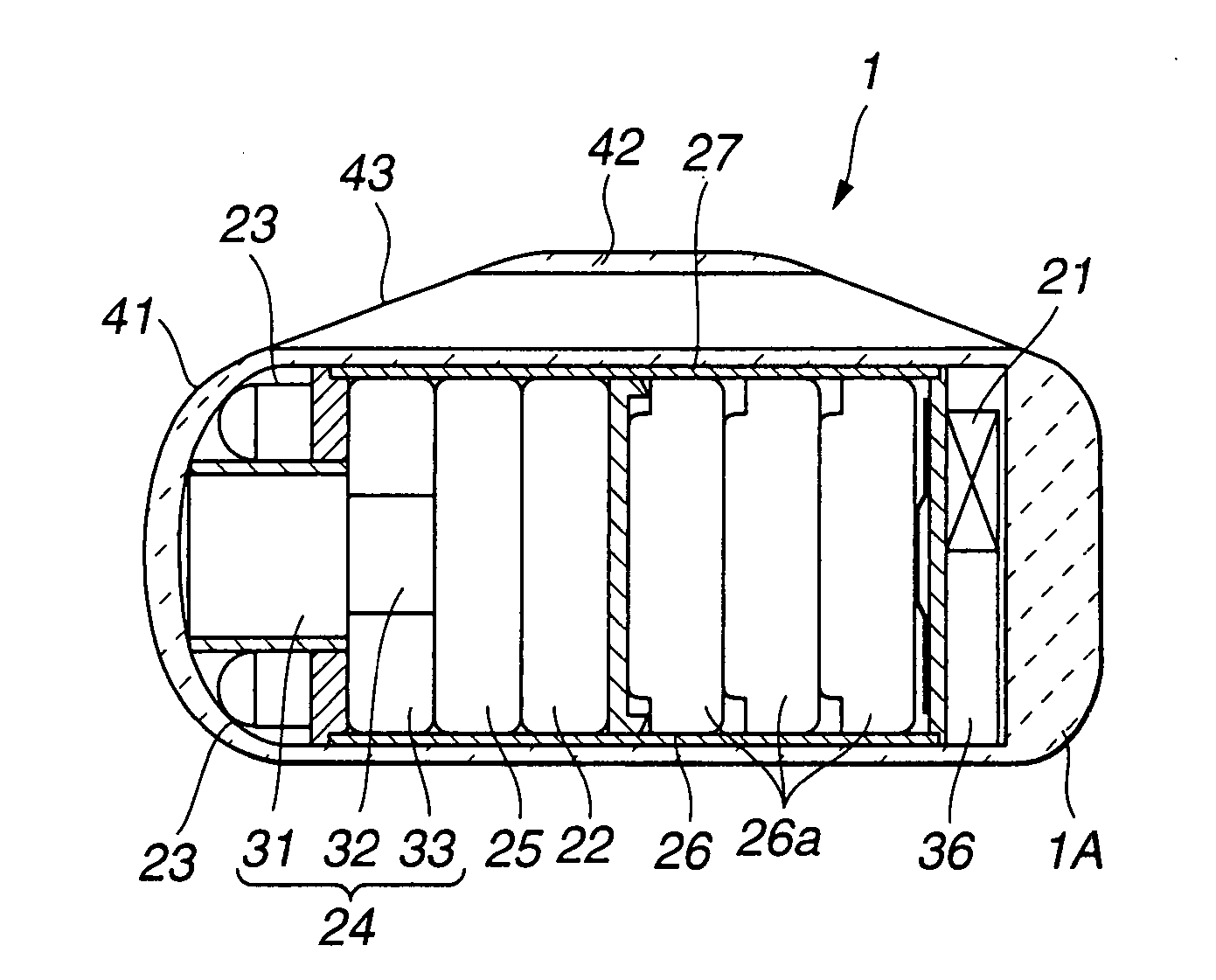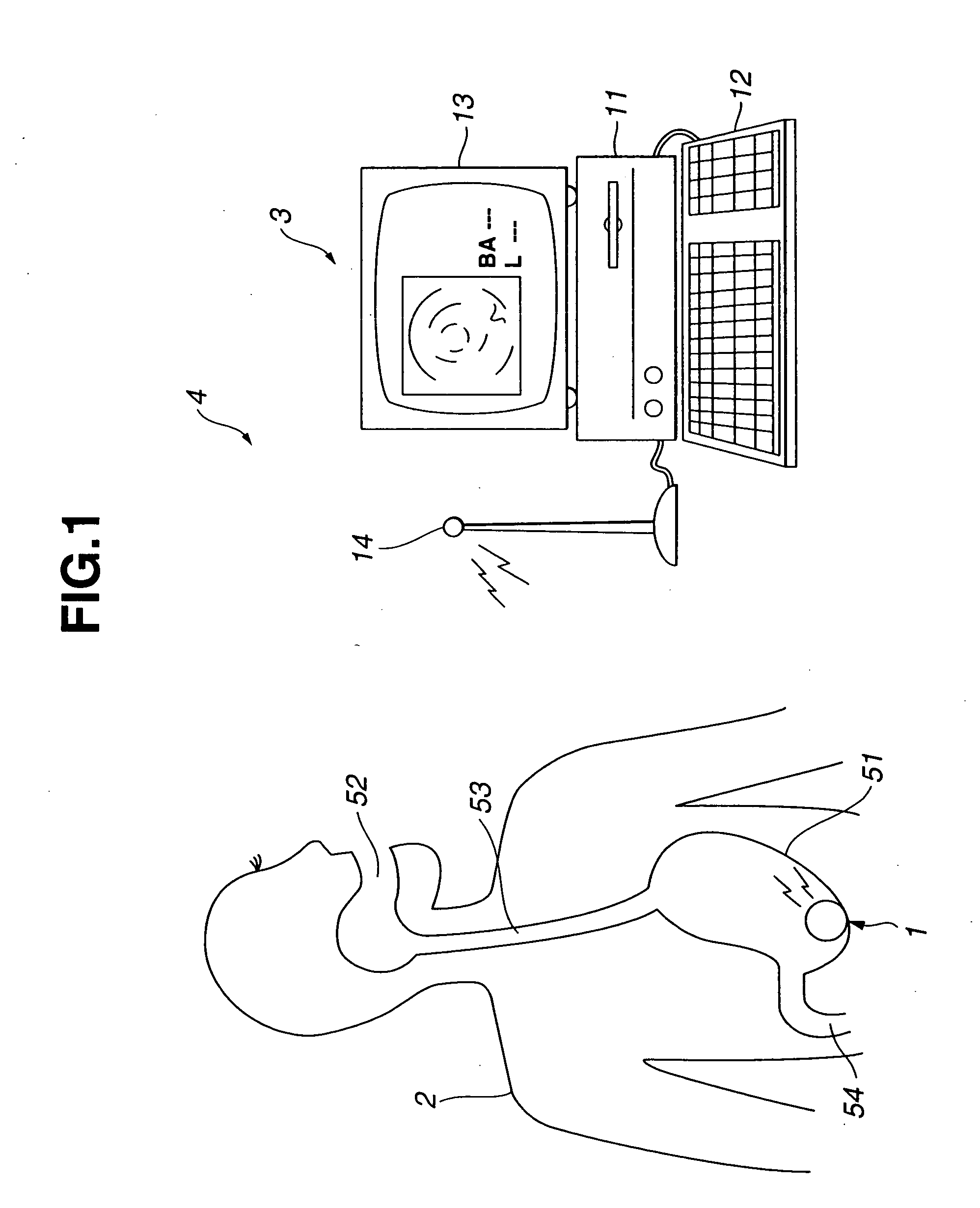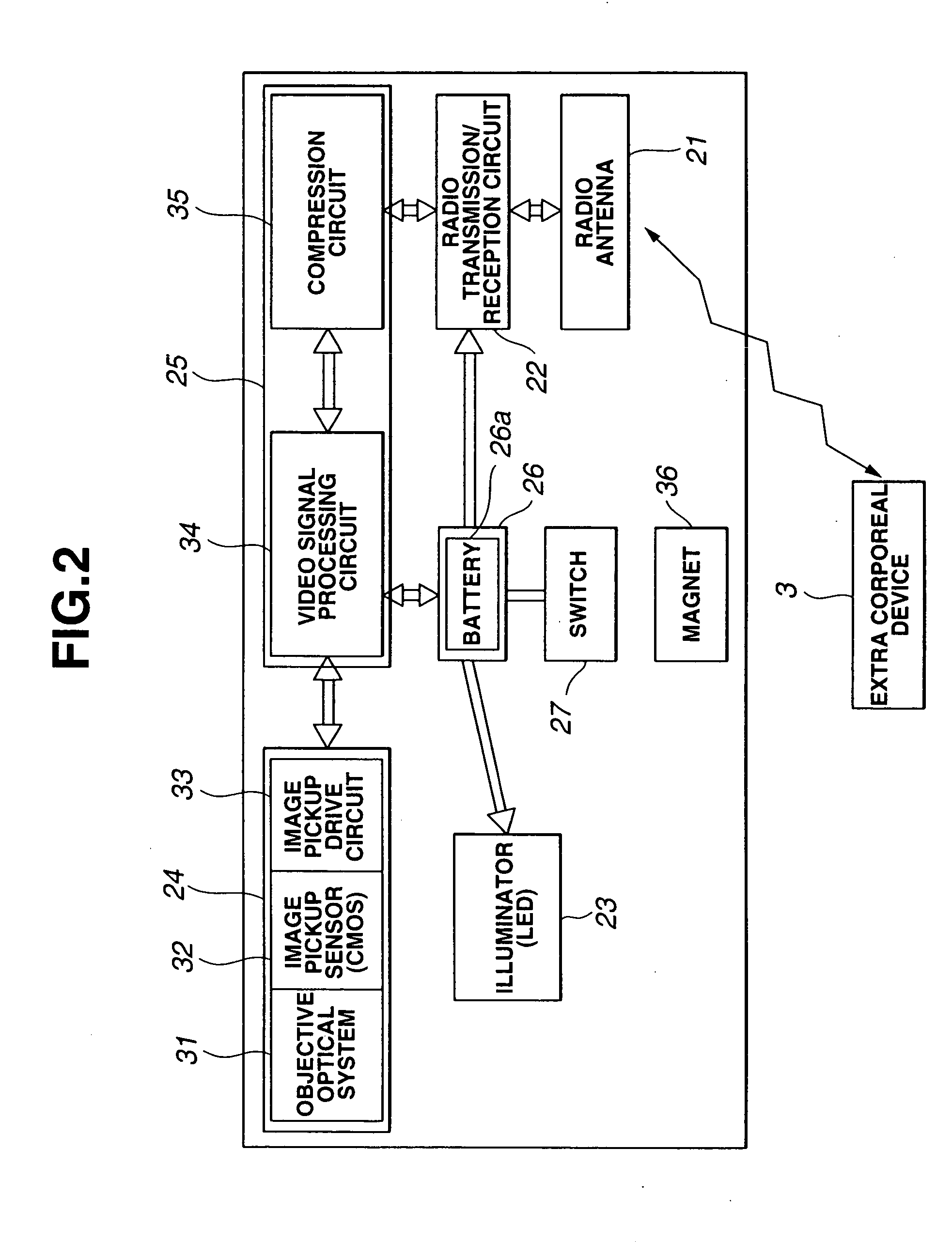Encapsulated medical device and method of examining, curing, and treating internal region of body cavity using encapsulated medical device
a medical device and encapsulation technology, applied in the field of encapsulated medical devices, can solve the problems of difficult to keep the endoscope inserted therein for a prolonged period of time, balloons coming into close contact with the internal surface of the body cavity to block the lumen, and concave parts hardly allow fluid such as gas or humor to flow forward or backward in the lumen, so as to achieve the effect of not deteriorating the ease of swallowing of the encapsul
- Summary
- Abstract
- Description
- Claims
- Application Information
AI Technical Summary
Benefits of technology
Problems solved by technology
Method used
Image
Examples
first embodiment
[0062]FIG. 1 to FIG. 12B are concerned with a first embodiment of the present invention. FIG. 1 shows the overall configuration of a medical system including the first embodiment of the present invention. FIG. 2 is a circuit block diagram showing the encapsulated medical device in accordance with the first embodiment of the present invention. FIG. 3A is a sectional view showing the components of the encapsulated medical device shown in FIG. 2. FIG. 3B shows the appearance of the front part of the encapsulated medical device shown in FIG. 3A. FIG. 3C shows the appearance of the back part of the encapsulated medical device shown in FIG. 3A. FIG. 4 is a sectional view showing a scene where the encapsulated medical device shown in FIG. 3A to FIG. 3C is passing through the esophagus. FIG. 5 is a sectional view showing a scene where the encapsulated medical device shown in FIG. 3A to FIG. 3C has come to a standstill in a stenosed part of the small intestine. FIG. 6 is a sectional view of ...
second embodiment
[0121]FIG. 13A to FIG. 15 are concerned with a second embodiment of the present invention. FIG. 13A is a sectional view showing the components of an encapsulated medical device in accordance with the second embodiment of the present invention. FIG. 13B is an A-A sectional view of the encapsulated medical device shown in FIG. 13A. FIG. 13C is a B-B sectional view of the encapsulated medical device shown in FIG. 13A. FIG. 13D is a C-C sectional view of the encapsulated medical device shown in FIG. 13A. FIG. 14 is a D-D sectional view of the encapsulated medical device shown in Fig. B. FIG. 15 is a sectional view showing a scene where the encapsulated medical device shown in FIG. 13A to FIG. 14 has come to a standstill in a stenosed part of the small intestine.
[0122] In the aforesaid first embodiment, the encapsulated medical device is formed with one capsule body. In the second embodiment, a capsule body is divided into a distal hard member and a back hard member. The distal hard mem...
third embodiment
[0133]FIG. 16A to FIG. 21B are concerned with a third embodiment of the present invention. FIG. 16A is a sectional view showing the components of an encapsulated medical device in accordance with the third embodiment of the present invention. FIG. 16B is an E-E sectional view of the encapsulated medical device shown in FIG. 16A. FIG. 17 is an explanatory diagram showing an encapsulated medical device of a variant that has a capsule body thereof covered with a transparent member that is an armor member. FIG. 18 is an explanatory diagram showing a scene where the encapsulated medical device shown in FIG. 17 has come to a standstill in a stenosed part of the small intestine. FIG. 19 is an explanatory diagram showing an encapsulated medical device of a variant that has a net-like mesh cover (mesh jacket) freely detachably attached to a capsule body thereof. FIG. 20 is an explanatory diagram showing a scene where the encapsulated medical device shown in FIG. 19 has come to a standstill i...
PUM
 Login to View More
Login to View More Abstract
Description
Claims
Application Information
 Login to View More
Login to View More - R&D
- Intellectual Property
- Life Sciences
- Materials
- Tech Scout
- Unparalleled Data Quality
- Higher Quality Content
- 60% Fewer Hallucinations
Browse by: Latest US Patents, China's latest patents, Technical Efficacy Thesaurus, Application Domain, Technology Topic, Popular Technical Reports.
© 2025 PatSnap. All rights reserved.Legal|Privacy policy|Modern Slavery Act Transparency Statement|Sitemap|About US| Contact US: help@patsnap.com



